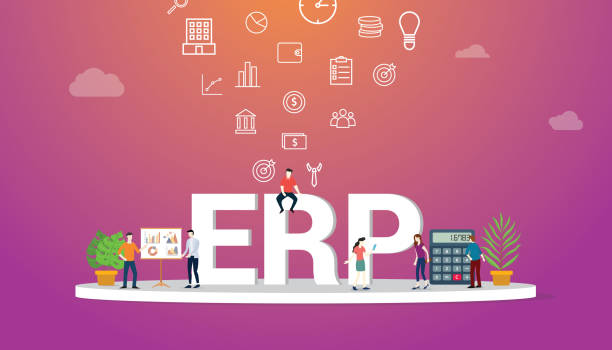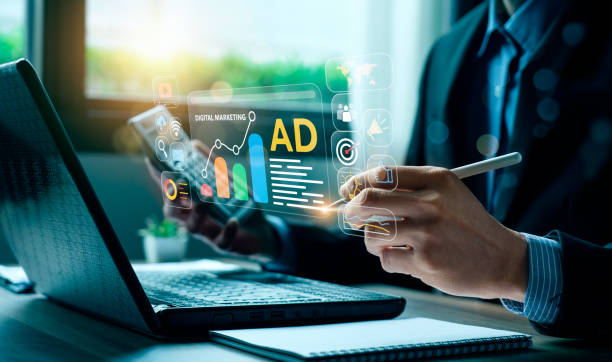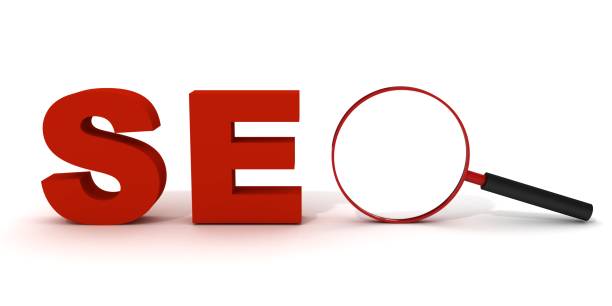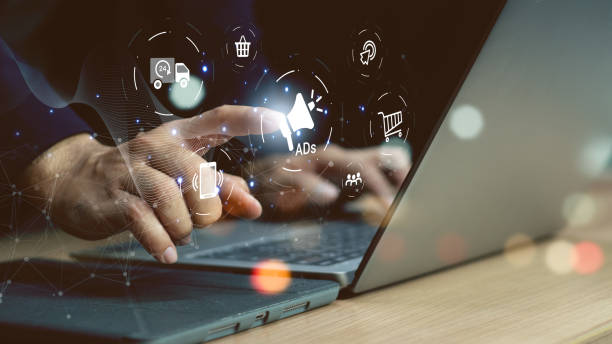Introduction to Internal SEO and Its Importance in Website Success

Internal SEO, or #On-Page_SEO, refers to a set of actions taken within a website to improve its ranking in search engine results.
These actions include optimizing content, HTML code, and the overall structure of pages.
The importance of internal SEO lies in helping search engines better understand your site’s content and determine whether your content is suitable for user searches.
Without a strong internal SEO strategy, even the best content might get lost among a flood of information and never be seen by the target audience.
This is a vital component of Search Engine Optimization (SEO) that directly impacts your website’s discoverability and ranking.
Understanding the principles of internal SEO is essential for any webmaster or digital marketer and can make a big difference in attracting organic traffic.
As an educational step, you should know that this type of SEO is the starting point for any successful SEO campaign.
Are you tired of losing business opportunities due to not having a professional corporate website?
Rasawweb helps you with professional corporate website design to:
✅ Build a powerful and reliable brand image
✅ Convert website visitors into loyal customers
⚡ Get your free consultation now!
Keyword Research: The Cornerstone of Every Internal SEO Strategy
![]()
#Keyword_Research is the beating heart of every internal SEO campaign.
Choosing the right keywords helps you create content that precisely matches the needs and questions of your users.
This process is not just about finding high-volume keywords, but also includes understanding user search intent.
Is the user looking for information (informational keywords), intending to buy (commercial keywords), or trying to go to a specific website (navigational keywords)? The answers to these questions guide your approach to content creation and page optimization.
Using keyword research tools like Google Keyword Planner, Ahrefs, or SEMrush can help you find relevant keywords, check search volume, and analyze competition.
A specialized approach at this stage also includes finding Long-tail Keywords, which, although having lower search volume, bring higher conversion rates because the user’s intent is more specific in them.
This part of internal SEO is entirely guiding and must be implemented carefully to achieve desired results.
Without proper keywords, other optimizations will have little impact.
Optimizing Title Tags and Meta Descriptions for More Clicks

#Page_Title (Title Tag) and #Meta_Description are the first things users see in search results and play a vital role in your Click-Through Rate (CTR).
The page title should be engaging, contain the main keyword of the page, and be less than 60 characters.
The meta description, usually between 150 and 160 characters, should provide a compelling summary of the page’s content and encourage users to click.
Although meta descriptions do not directly affect page rankings, by increasing CTR, they signal to search engines that your page is attractive to users, and this indirectly helps with ranking.
In the context of internal SEO, these elements must be optimized with great care.
Using keywords in the title and meta description helps search engines better understand the relevance of your content to user searches.
This is an explanatory yet specialized aspect of internal SEO that should not be overlooked.
Here is a comparative table of the differences between Title Tags and Meta Descriptions:
| Feature | Title Tag | Meta Description |
|---|---|---|
| Display Location | Browser tab title, search results | Below the page title in search results |
| Direct Ranking Impact | Very high | Indirect (via CTR) |
| Recommended Length | About 50-60 characters | About 150-160 characters |
| Main Goal | Announcing page topic to search engine and user | Attracting user clicks and providing content summary |
| Includes Keyword | Must include main keyword | Can include relevant keywords |
URL Structure and Its Role in Internal SEO

#URL_Structure is an important part of #Internal_SEO that is often overlooked, while it can have a significant impact on crawling, indexing, and user experience (UX).
A good URL should be #short, #descriptive, and #readable.
Using relevant keywords in the URL not only helps search engines better understand the page’s topic but is also clearer for users and can affect the click-through rate.
Long URLs full of incomprehensible characters are confusing for both search engines and users.
For example, instead of using URLs like www.example.com/page?id=123&cat=456, it’s better to use www.example.com/blog/seodakheli-rahnama.
This type of URL clearly indicates what the page is about.
Avoid using special characters and uppercase letters, and instead use hyphens (-) to separate words.
This section is an analytical and guiding component of page optimization that directly impacts the search engine’s understanding of your content.
Remember that optimized URLs directly contribute to a successful internal SEO strategy.
Do you know that your company’s website is the first point of contact for 75% of potential customers?
Your website is the face of your brand. With **Rasawweb**’s corporate website design services, build an online presence that earns customer trust.
✅ Create a professional and lasting image for your brand
✅ Attract target customers and increase online credibility
⚡ Get a free consultation from **Rasawweb** experts!
Content Optimization; The King Crowned by Internal SEO
![]()
#Content_is_King, but for this king to be properly crowned, it must be optimized.
Content optimization for internal SEO goes beyond merely inserting keywords; it involves creating high-quality, valuable, unique, and comprehensive content that answers users’ questions and addresses their needs.
Your content should be in-depth, authoritative, and up-to-date.
Natural use of primary keywords and related keywords (LSI keywords) in throughout the text, without overuse or Keyword Stuffing, is crucial.
Also, you should use proper formatting including short paragraphs, bullet points, and images and videos to improve readability and appeal.
Analytical and explanatory content presented in an educational manner not only attracts users but also shows search engines that your page is an authoritative source.
Creating engaging_content can increase user interaction and time spent on the page, which is a positive signal for ranking.
The more comprehensive and accurate your content, the higher your chances of ranking for multiple keywords.
This aspect of internal SEO requires continuous attention and a deep understanding of your audience.
The Importance of Correct Use of Heading Tags (H1-H6) in Content Structure

#Heading_Tags (H1, H2, H3, etc.) are not just for enlarging text; they play a significant role in organizing content and improving readability for both users and search engines.
The H1 tag should be used as the main title of the page and usually contains the primary keyword of the page.
Each page should have only one H1 tag.
H2 tags are used for the main sections of the content, and H3 to H6 tags are used for their subsections, creating a logical hierarchy.
This hierarchy helps search engines understand your content structure and identify important sections.
For users, headings act as anchor points that allow them to quickly find the content they are looking for and have a better user experience.
This is a specialized and guiding aspect of internal SEO that directly affects the readability and understanding of your content by crawling bots.
Ensure that you naturally place relevant keywords in your headings, but avoid excessive stuffing.
Correct heading optimization will lead to significant rewards in improving site ranking.
Images and Their Optimization; Beauty and Efficiency in Internal SEO

#Images play a very important role in a website’s visual appeal and increasing user engagement, but to work in favor of internal SEO, they must be optimized.
Image optimization includes several key steps: #image_compression to reduce file size without significant loss of quality, using a descriptive and keyword-rich #Alt_Text tag (Alt Text helps search engines and visually impaired users understand image content), and choosing an appropriate file name for the image that indicates its subject.
Furthermore, image dimensions should be suitable for their display location to prevent unnecessary loading of large images.
Page loading speed is one of the important ranking factors, and unoptimized images can drastically reduce it.
This is a specialized and educational aspect that ultimately helps improve user experience and search engine ranking.
Here is a table of best practices for optimizing images for internal SEO:
| Optimization Technique | Description | Importance in Internal SEO |
|---|---|---|
| Image Compression | Reducing image file size without significant quality reduction (formats like WebP) | Increased page load speed, improved UX and Core Web Vitals |
| Alt Text | Explaining image content for search engines and visually impaired users | Helps understand image topic, improves ranking in image search |
| Descriptive File Name | Using relevant and keyword-rich file names (e.g., seodakheli-rahnama.jpg) | Helps search engines understand image content |
| Appropriate Dimensions | Using image dimensions suitable for their display location on the page | Prevents browser resizing, maintains load speed |
| Lazy Loading | Loading images only when they are in the user’s viewport | Significantly improves initial page load speed |
Internal and External Linking; A Network to Empower Internal SEO

#Linking, whether #internal or #external, is the backbone of any successful SEO strategy and plays a vital role in internal SEO.
#Internal_Links are connections that link different pages of your website to each other.
These links help search engines better understand your site’s structure and crawl and index pages.
Additionally, internal links help distribute “Page Authority” or Page Authority throughout your website.
On the other hand, #External_Links to other websites, especially reputable and relevant ones, signal to search engines that your content is accurate and well-researched.
This is a positive signal for the trust and credibility of your content.
Creating a strong network of internal links with appropriate #Anchor_Texts that include relevant keywords not only improves user experience but also strengthens the SEO of your pages.
This is an analytical and explanatory part of internal SEO that must be strategically planned and executed for maximum efficiency.
An important guideline is to avoid excessive and irrelevant linking.
Are you losing business opportunities because of an outdated website? With Rasawweb, solve the problem of not attracting potential customers through your website forever!
✅ Attract more high-quality leads
✅ Increase brand credibility in the eyes of customers
⚡ Get a free consultation on corporate website design
Website Loading Speed and User Experience; Crucial Factors in Internal SEO

In today’s world, where users demand instant access to information, #website_loading_speed is no longer a luxury but a necessity.
Slow websites not only provide a poor user experience but are also less favored by search engines.
Google and other search engines consider page speed as an important ranking factor.
Tools like Google PageSpeed Insights can help you evaluate your site’s performance and identify weaknesses.
Optimizing images, reducing unnecessary CSS and JavaScript code, using a CDN (Content Delivery Network), and Gzip compression are among the actions that can significantly improve your site’s speed.
This aspect of #Internal_SEO directly impacts #User_Experience (UX), as users tend to stay on fast and smooth websites.
News and analytical content regarding Google’s algorithm updates constantly emphasize the importance of this factor.
Improving site speed not only helps your ranking but also leads to an increase in conversion rates and a decrease in bounce rate.
Monitoring and Continuous Improvement of Internal SEO; An Endless Process

#Internal_SEO is not a one-time process; it requires #continuous_monitoring and #ongoing_improvement.
The world of SEO is constantly changing, and search engine algorithms are regularly updated.
To maintain and improve your site’s ranking, you must regularly review the internal SEO performance of your pages.
Using tools like Google Search Console and Google Analytics is essential for tracking keywords, traffic, bounce rate, and user dwell time.
Data analysis helps you identify new opportunities and resolve existing issues.
Have new keywords emerged? Is the bounce rate for a specific page high? Is your organic traffic decreasing? The answers to these questions will guide you in your next optimization steps.
This is an analytical and guiding process that allows you to keep your internal SEO strategy always optimized.
Remember, SEO is a marathon, not a sprint; success in it requires patience, continuous effort, and #content_updates.
Frequently Asked Questions
| Question | Answer |
|---|---|
| What is Internal SEO (On-page SEO)? | Internal SEO refers to a set of actions performed within a website and on its page content to achieve a better ranking in search results. |
| Why is internal SEO important for a website? | Internal SEO helps search engines better understand your page content and assess its importance. It also provides a better user experience for visitors. |
| What are the most important internal SEO factors? | The most important factors include keyword optimization, content quality, Title Tag, Meta Description, URL structure, Heading tags (H1-H6), internal linking, and image optimization. |
| What role does the Title Tag play in internal SEO? | The Title Tag is one of the most important internal SEO factors that displays your page title in search results and browser tabs. It should include the main keyword and be engaging. |
| What is the importance of Meta Description in internal SEO? | The Meta Description provides a summary of the page content, and although it doesn’t directly affect ranking, it can increase the Click-Through Rate (CTR) by encouraging users to click. |
| How are keywords used in internal SEO? | Keywords are phrases users employ to search for information in search engines. Proper and natural use of them in content helps the search engine determine the page’s topic. |
| What is internal linking and what is its benefit in internal SEO? | Internal linking means creating links between different pages of a website. This helps distribute page authority, assists search bots in crawling, and improves user experience. |
| How does image optimization affect internal SEO? | Image optimization includes compressing file size, using appropriate Alt tags, and proper file naming. This improves page load speed and helps search engines understand image content. |
| What does quality content mean in internal SEO? | Quality content means content that is comprehensive, accurate, unique, up-to-date, and user-friendly, addressing users’ needs. |
| What role does URL structure play in internal SEO? | Readable, short, and keyword-inclusive URLs help search engines and users better understand the page content and improve user experience. |
And other services of Rasawweb Advertising Agency in the field of advertising
Smart Customer Journey Map: An effective tool to increase click-through rate with the help of marketing automation.
Smart Google Ads: A combination of creativity and technology to improve SEO ranking through custom programming.
Smart Conversion Rate Optimization: A creative platform for improving campaign management with Google Ads management.
Smart Conversion Rate Optimization: A professional solution for user interaction focusing on marketing automation.
Smart Conversion Rate Optimization: A combination of creativity and technology to increase website traffic through intelligent data analysis.
And over hundreds of other services in the field of internet advertising, advertising consulting, and organizational solutions
Internet Advertising | Advertising Strategy | Advertorials
Resources
Comprehensive Guide to Internal SEO on Mizfa
Internal SEO Training and Website Ranking Improvement from Seorooz
Key Tips for Improving Website Ranking on Google
Principles and Fundamentals of Internal SEO and Website Optimization
? For a powerful presence in the digital world and to elevate your business, Rasawweb Afarin, a leading digital marketing agency, is with you. With our comprehensive services, including SEO-optimized website design, we will take your business to its peak.
📍 Tehran, Mirdamad Street, next to Bank Markazi, Kazeroon Janubi Alley, Ramin Alley, No. 6

